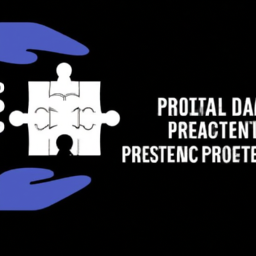How Can We Assess The Potential Market Share Loss After A Cyber Incident?
Imagine you wake up one morning to discover that your company has been the victim of a cyber incident. Panic sets in as you wonder how this will impact your market share and the future of your business. In this article, we will explore the different factors and strategies that can help you assess the potential market share loss in the aftermath of a cyber incident. By understanding the potential impact, you can better prepare and develop strategies to mitigate any damage and bounce back stronger than before.
Factors to Consider in Assessing Market Share Loss
Impact on Customer Trust and Confidence
One of the most significant factors to consider when assessing market share loss after a cyber incident is the impact on customer trust and confidence. When a company experiences a data breach or a cybersecurity incident, customers may feel their personal information is at risk and be hesitant to continue doing business with the affected company. This loss of trust can significantly impact a company’s market share as customers may seek out alternative options or turn to competitors they perceive as more secure.
Effect on Brand Reputation
The effect on brand reputation is closely tied to the impact on customer trust and confidence. A cyber incident can severely damage a company’s brand reputation, leading to a decline in market share. News of a data breach or other cybersecurity vulnerabilities can spread quickly, especially in today’s digital age. Customers may associate the company with a lack of security and be reluctant to continue their relationship, leading to a loss of market share.
Competitive Landscape
The state of the competitive landscape is an essential consideration when assessing market share loss. After a cyber incident, competitors may see an opportunity to capitalize on the affected company’s vulnerabilities and attract its customers. It is crucial to evaluate how competitors are responding to the incident and whether they are offering enhanced security measures to gain a competitive advantage. The actions and strategies of competitors can significantly impact the long-term market share of the affected company.
Regulatory and Legal Consequences
In addition to the impact on customer trust and competition, regulatory and legal consequences play a significant role in assessing market share loss after a cyber incident. Depending on the nature and severity of the incident, the company may face fines, legal actions, or regulatory scrutiny. These consequences can have long-lasting effects on the company’s reputation, customer perception, and overall market share.
Financial Impact
The financial impact is a crucial factor to consider when assessing market share loss. A cyber incident can result in significant financial losses, including costs associated with incident response, remediation, customer compensation, and potential litigation. These financial burdens can strain the company’s resources and hinder its ability to compete effectively in the market, leading to a decline in market share.
Methods for Assessing Market Share Loss
Quantitative Analysis
Quantitative analysis involves using numerical data to assess market share loss accurately. It provides a measurable and objective approach to understanding the impact of a cyber incident on market share. Several methods can be employed to conduct quantitative analysis.
Qualitative Analysis
Qualitative analysis involves gathering non-numerical information to assess market share loss. It focuses on understanding the subjective aspects of the impact on customer perception and brand reputation. Qualitative analysis techniques provide valuable insights that complement the quantitative data and offer a holistic view of the cyber incident’s impact on market share.
Quantitative Analysis
Customer Surveys
One method for conducting quantitative analysis is through customer surveys. Surveys can be used to gather data on customers’ perceptions, attitudes, and behaviors following a cyber incident. By asking targeted questions, companies can gauge the impact of the incident on customer trust, confidence, and their likelihood to continue doing business.
Sales and Revenue Data Analysis
Analyzing sales and revenue data can provide valuable insights into the impact of a cyber incident on market share. By comparing pre-incident and post-incident data, companies can identify any significant changes in sales volume or revenue that can be attributed to the cyber incident. This quantitative approach helps assess the financial impact and potential market share loss.
Market Research and Analysis
Collecting and analyzing data from market research reports and industry studies can also help assess market share loss. These sources provide valuable industry benchmarks and insights into consumer behavior. By comparing pre-incident and post-incident market data, companies can identify any shifts in market share and understand how the incident may have influenced consumer preferences and choices.
Qualitative Analysis
Brand Perception and Reputation Analysis
Conducting brand perception and reputation analysis through surveys, focus groups, or interviews can provide qualitative insights into the impact of a cyber incident on customer perception and brand reputation. This analysis helps assess the intangible aspects of market share loss, such as the erosion of trust or the negative perception associated with the incident.
Media Monitoring and Sentiment Analysis
Monitoring media coverage and analyzing sentiment can shed light on how the incident is being portrayed in the public sphere. By tracking news articles, social media posts, and online discussions, companies can gauge the overall sentiment surrounding the incident and understand how it may impact customer trust and brand reputation.
Competitor Analysis
Analyzing the actions and strategies of competitors can provide qualitative insights into the impact of a cyber incident on market share. By monitoring how competitors respond to the incident and whether they are capitalizing on the affected company’s vulnerabilities, organizations can gain valuable insights into the potential loss of customers to competitors.
Steps to Determine Market Share Loss
Establish a Baseline Market Share
Before assessing market share loss, it is essential to establish a baseline market share. This baseline serves as a reference point to understand the pre-incident market share and track any changes that occur following the cyber incident. Collecting historical data and conducting market analysis can help establish this baseline.
Identify Potential Customers Affected
To assess market share loss accurately, it is crucial to identify the potential customers affected by the cyber incident. This can be done by analyzing customer data, conducting surveys, or reaching out to customers directly. By understanding the scope of impact, companies can estimate the potential loss of customers and market share.
Evaluate Factors Impacting Market Share
Identify and evaluate the factors that impact market share loss. This includes analyzing the impact on customer trust, brand reputation, the competitive landscape, regulatory consequences, and financial implications. By considering these factors, companies gain a comprehensive understanding of the potential market share loss and the areas that need attention.
Analyze Historical Data and Market Trends
Analyze historical data and market trends to identify patterns and correlations related to market share loss. By looking at past incidents or similar industry events, companies can gain insights into how market share has been affected historically. This analysis helps in predicting potential market share loss and devising strategies to mitigate it.
Calculate Potential Market Share Loss
Based on the data collected through quantitative and qualitative analysis, and considering the identified factors, calculate the potential market share loss. This calculation should take into account the estimated loss of customers, changes in market dynamics, and potential shifts in consumer preferences. By quantifying the potential market share loss, companies can better understand the impact of the cyber incident and develop appropriate strategies.
Tools and Technologies for Market Share Assessment
Data Analytics and Business Intelligence Tools
Data analytics and business intelligence tools are instrumental in conducting quantitative analysis for market share assessment. These tools can help analyze large datasets, identify trends, and generate insights related to market share loss. They provide valuable support in processing and visualizing data, enabling companies to make informed decisions.
Social Media Listening and Monitoring Tools
Social media listening and monitoring tools are crucial for qualitative analysis of market share loss. These tools allow companies to track mentions and sentiment on social media platforms, analyze customer feedback, and monitor competitor activities. Social media listening tools provide valuable insights into how the cyber incident is being perceived and discussed in the online community.
Market Research and Competitive Analysis Tools
Market research and competitive analysis tools provide access to industry reports, market data, and competitor intelligence. These tools help companies gather relevant information about market trends, customer preferences, and competitor strategies. By leveraging these tools, companies can enhance their understanding of market dynamics and assess the potential market share loss more effectively.
Best Practices to Mitigate Market Share Loss
Implement Cybersecurity Measures
To mitigate market share loss, it is crucial to implement robust cybersecurity measures. Strengthening security protocols, conducting frequent risk assessments, and investing in advanced technologies can help prevent future cyber incidents. By demonstrating a commitment to safeguarding customer data, companies can rebuild trust and confidence among their customer base.
Develop a Crisis Management Plan
Having a well-defined crisis management plan in place is essential to effectively navigate a cyber incident. A comprehensive plan should outline procedures for incident response, communication, and customer support. By responding promptly and transparently during a crisis, companies can minimize the impact on market share and customer trust.
Insurance Coverage and Risk Transfer
Obtaining insurance coverage for cyber incidents can provide financial protection and mitigate market share loss. Cyber insurance policies can help cover the costs associated with incident response, data breach notification, and legal expenses. By transferring some of the risk to insurance providers, companies can better manage the financial implications of a cyber incident.
Communication and Transparency
Maintaining open communication and transparency with customers, stakeholders, and the public is vital in mitigating market share loss. Promptly informing customers about the incident, the steps taken to address it, and the measures implemented to prevent future incidents demonstrates a commitment to customer trust. Transparent communication can help reduce the negative impact on brand reputation and market share.
Case Studies
Target Corporation Breach
The Target Corporation data breach in 2013 serves as a notable case study on market share loss after a cyber incident. The breach compromised the personal information of millions of customers, leading to a significant loss of customer trust. Target estimated an initial $148 million of net expenses related to the breach, including costs for legal fees and customer reimbursements. As a result of the incident, Target experienced a decline in sales and faced reputational damage, briefly losing its position as a leading retailer.
Equifax Data Breach
The Equifax data breach in 2017 is another noteworthy case study on the potential market share loss after a cyber incident. The breach exposed sensitive personal information of approximately 147 million Americans. Following the incident, Equifax faced intense public scrutiny, legal actions, and a decline in its stock price. The loss of customer trust and brand reputation had a significant impact on Equifax’s market share, with consumers seeking alternative credit reporting options.
Yahoo Data Breach
The Yahoo data breaches in 2013 and 2014 highlight the long-term consequences of market share loss after multiple cyber incidents. These breaches compromised the personal information of billions of Yahoo users. The incidents had severe implications for Yahoo’s brand reputation, resulting in a decline in market share and contributing to the company’s ultimately reduced valuation during its acquisition by Verizon Communication.
Conclusion
Assessing market share loss after a cyber incident is a complex and multifaceted process. It requires considering factors such as the impact on customer trust and confidence, brand reputation, the competitive landscape, regulatory consequences, and financial implications. By employing a combination of quantitative and qualitative analysis methods, companies can gain valuable insights into the potential market share loss and develop strategies to mitigate it. Implementing robust cybersecurity measures, developing a crisis management plan, obtaining insurance coverage, and maintaining communication transparency are vital practices to minimize market share loss. Learning from case studies, such as Target Corporation, Equifax, and Yahoo, provides valuable insights into the long-lasting consequences of cyber incidents on market share. Ultimately, thorough market share assessments and proactive measures are essential for companies to navigate the challenging landscape following a cyber incident and protect their market share.








